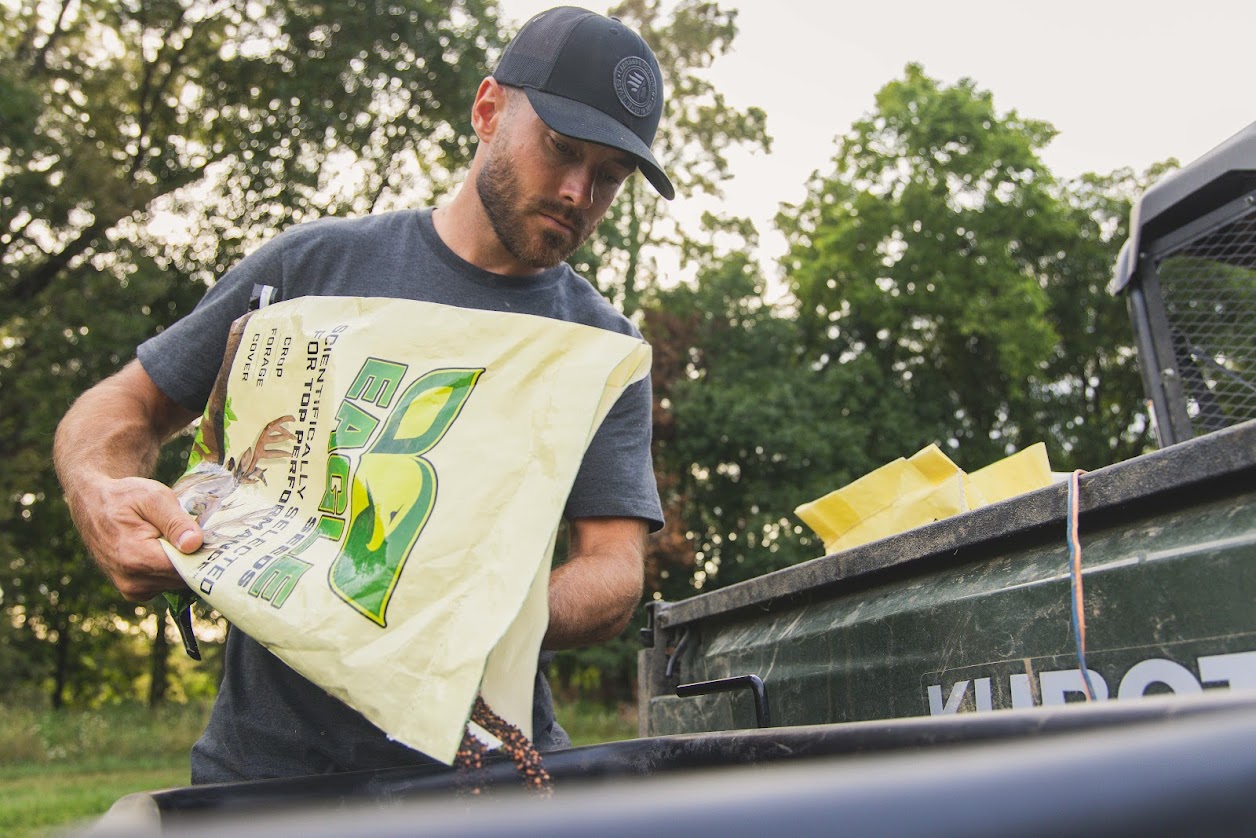Clover Keeper®
Perennial Clover Blend
Clover Keeper is a highly preferred, hightonnage, easy to grow perennial clover blend. This new product is composed of top yielding red and white clovers from multiple state grazing and tonnage trials. These clovers accommodate a wide range of soil types, temperature ranges, and soil conditions. The clovers work synergistically, flowering and maturing at alternating times for excellent spring and fall growth. One pre-inoculated 12 lb. bag covers one acre. Also available in 1/6 acre quick grab sizes.

Clover Management Recommendations:
- Test soil pH and follow lime and fertilizer recommendations each season. If you do this each year, you may end up saving money on fertilizer. Your soil pH should be between 6.5 to 7.5 (your soil needs to be at this pH level to allow plants to uptake nutrients and make their own nitrogen). If you don’t have a soil test and know your pH is low, you will probably need to add a couple of tons of lime per acre. You will also need about 100 lbs of P and 100 lbs of K per acre. This seed is inoculated and can make its own nitrogen, but you can use 20 units of starter N.
- Graze or hay warm-season grasses to about a two inch height before planting. If this is not an option use a nonresidual herbicide such as Roundup (follow label directions) a week or two in advance of planting to desiccate/kill weeds. Another pre-emerge option is Benefin, but it must applied prior to planting and must be incorporated.
- The ideal planting area is bottomland and high-moisture soils with heavier texture, not water-logged soil or drought prone soils. Clover is typically not recommended for upland soils with low organic matter. It is best to prepare a smooth, firm seed bed without deep pockets and clods. Plant one full bag per acre. You can either broadcast or drill (1/8 to 1/4 inch depth) onto a smooth surface. If broadcasting, cover lightly with up to 1/4 inch of soil and firm up with a drag or roller. Avoid planting in hot, dry conditions. Don’t work your plot when it is wet, or muddy, this can cause compaction.
- Plan acreage needed based on animal pressure (0.5 to 0.8 acre / cow + calf). Use an exclusion cage to gauge how well the plants are growing and to determine the amount of animal pressure on the plot. This will help determine if you need more acreage.
- While not necessary, you could clip clover when it is taller than 4-6 inches to keep it tender. It is best to clip after bloom occurs to allow re-seeding. Avoid clipping in droughty or hot weather. To control grasses, use grass specific herbicides such as clethodim or sethoxydim. Always kill your weeds when they are small, 2-4 inches. To control broadleaves, use 2,4-DB amine (always follow label directions, refer to MP 44 www.aragriculture.org). Herbicides do not work well on drought-stressed weeds
- Clover can provide up to 125 lbs. of nitrogen per acre that will be available for the next crop through nutrient cycling for the next season.
- Some of the clovers in this blend are annuals and some are perennials. Clover often does not persist under hot, dry summers in the Southern US. If you intend to manage the clover as a perennial, it is best to reseed every year in the fall and add 60 units of P and K twice per year. In order to feed your animals well, you need to feed the plants well.
- Always store seed in a cool, dry place prior to planting.
**Data courtesy of U of A MP 44 and Texas A & M
